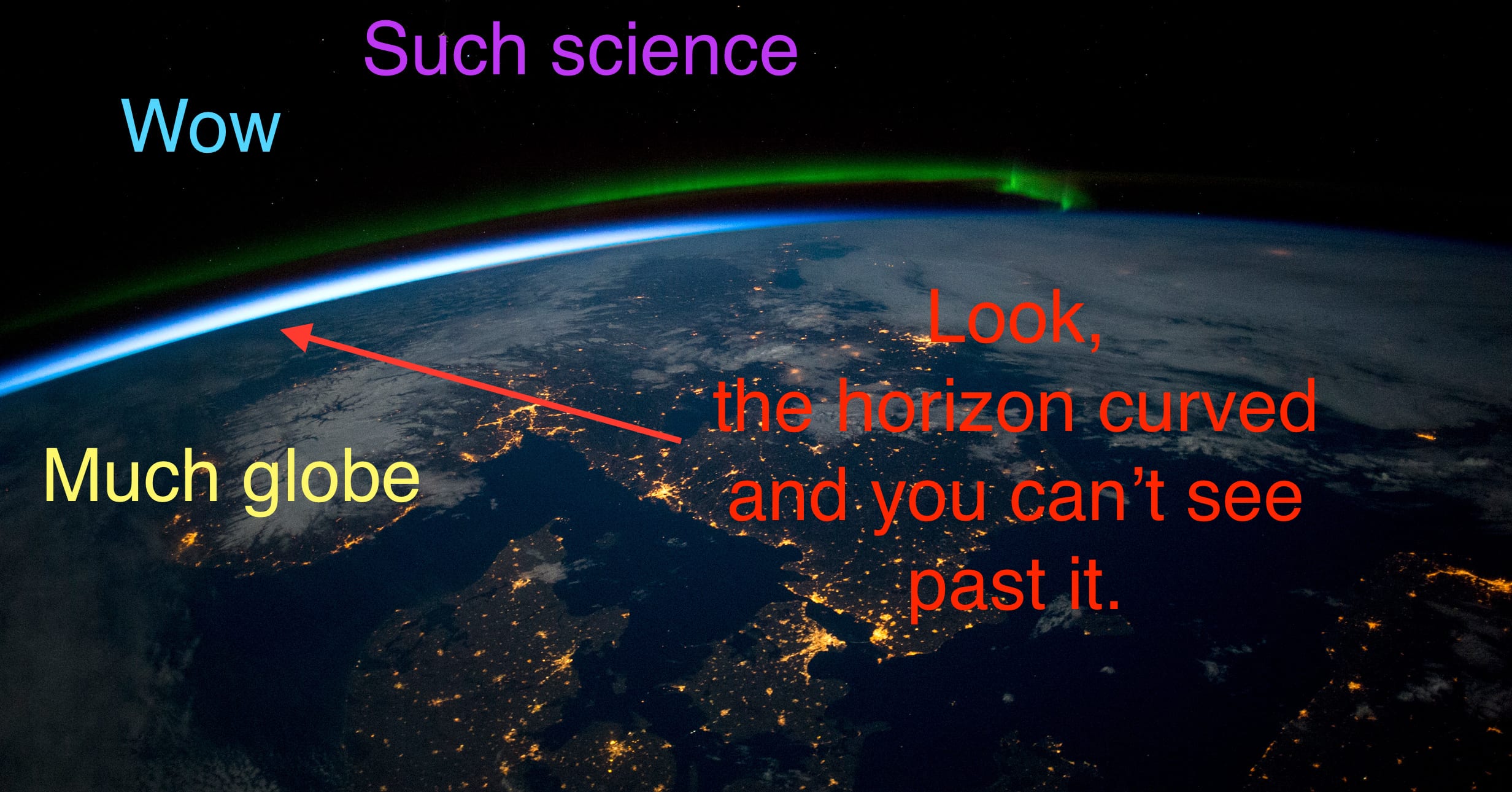

On a flat surface the horizon goes up to “eye level”(and lies in infinity, according to perspective theory), for which your reference can be a water level or a theodolite(-app). The observable difference lies in up to how high you go before you reach the horizon. This is the case for a flat plane but also for a curved plane or even for a slightly downward slope. You may call that “the ground appears to come up”, if you like. When you start looking at your feet and want to look further away, then you will have to raise your head and your eyes. So this illusion of things rising on one side and coming up to the center and then going down on the other side and setting, it is just an illusion created by perspective and the vanishing and appearing points around the edge of the circular portion of the sky we are viewing. There is a circular region of the sky that we are viewing and things come into our view at the horizon on one side, they come up to their highest point above our heads and as they move across the sky they come down again to the horizon on the other side.īut this circular region of the sky we are viewing has its appearing and vanishing points around the horizon. It has nothing to do with the shape of the earth.

Ground is not coming up and sky is not coming down. So you see ground coming up and sky coming down. You see the ground coming up to the meet the sky in the center. You don’t see it as you would see looing off a globe. And because of this perspective view you have no way actually of telling what the ground is doing. We see the ground coming up to the center of your view. The ground would go down as the globe drops away.

If you were actually looking off a globe then there would be no horizon. The ground appears to come up to the horizon. Presumably if you could go higher the horizon would lower and gradually the globe earth would come into view as you get further away from it… Because we can not go up high enough to see the globe. So this is probably not a valid proof the earth is flat.

In reality if you rise up 10 miles above a globe with a diameter of about 8000 miles you can not expect to see anything very much different in regard to the horizon level than when you were are on the ground. Standing in a rising balloon, you would have to look downwards to the horizon the highest point of the ball-Earth would be directly beneath you and declining on each side. “If the Earth were actually a big ball, however, the horizon should sink as you ascend, not rise to your eye-level, and it would dip at each end of your periphery, not remain flat all around. You can test for yourself on a beach or hilltop, in a large field or desert, aboard a hot-air balloon or helicopter you will see the panoramic horizon ascend with you and remain completely level all around. “Whether at sea-level, the top of Mount Everest, or flying over a hundred thousand feet in the air, the always horizontal horizon line always rises up to meet the eye-level of the observer and remains perfectly flat. This is quoted as one of the primary proofs the earth is flat.
#FLAT EARTHER PERFECT HORIZON WINDOWS#
They note that when flying on an airplane perhaps ten miles up when you look out the windows you see the horizon rising up to the center as you would see it on earth. Flat earthers claim if we are on a globe one would you rise up from the globe the horizon would lower.


 0 kommentar(er)
0 kommentar(er)
